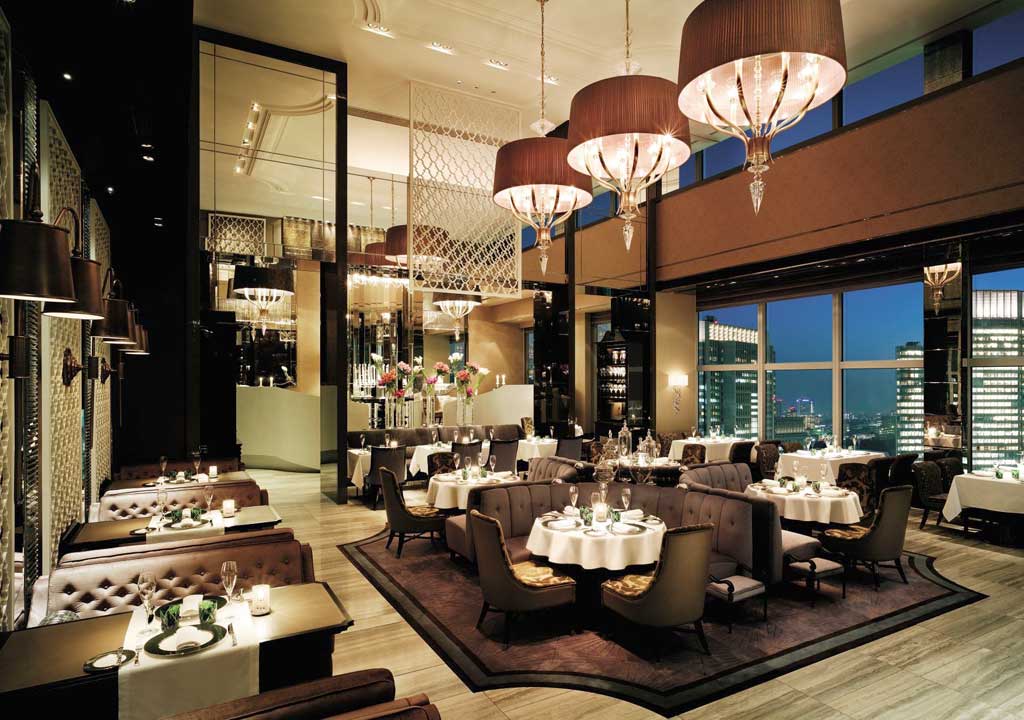Room Service: Shangri-La Tokyo, Japan
Lost horizon at the top of a tower

Your support helps us to tell the story
From reproductive rights to climate change to Big Tech, The Independent is on the ground when the story is developing. Whether it's investigating the financials of Elon Musk's pro-Trump PAC or producing our latest documentary, 'The A Word', which shines a light on the American women fighting for reproductive rights, we know how important it is to parse out the facts from the messaging.
At such a critical moment in US history, we need reporters on the ground. Your donation allows us to keep sending journalists to speak to both sides of the story.
The Independent is trusted by Americans across the entire political spectrum. And unlike many other quality news outlets, we choose not to lock Americans out of our reporting and analysis with paywalls. We believe quality journalism should be available to everyone, paid for by those who can afford it.
Your support makes all the difference.The Shangri-La Tokyo occupies 11 floors at the top of the 37-storey Marunouchi Trust Tower, which means none of its 200 rooms is without a view: to the east, Tokyo Bay and the newly built Tokyo Sky Tree tower, Japan's tallest structure; to the west, the Imperial Palace gardens, the skyscrapers of Shinjuku and – on a clear day – Mount Fuji.
Shangri-La opened its first hotel in Singapore in 1971 and now has 72 properties worldwide, all based on the theme of comfort and serenity inspired by James Hilton's 1933 book of pseudo-spiritual hokum, Lost Horizon. In Hilton's novel, a plane crashes in the Tibetan mountains and four survivors stumble across a mystical Himalayan monastery named Shangri-La, where the secret of eternal youth resides.
Back in the real world, the Shangri-La is relatively well sign-posted, and a tad pricier than its Tokyo rivals. But it rewards guests with, if not exactly eternal youth, then a welcome and well-appointed respite from the hubbub of the streets below.
The service is impeccable. If I say we started making bets as to how many porters and receptionists would say "welcome back" whenever we returned, and that each time an elevator door closes the attendant bows to its occupants until it departs, you should get some idea of the staff's commitment. (And in Japan, no tipping is necessary, or even expected.)
The hotel houses two excellent restaurants: Piacere, which serves an Italian dinner and a choice of Japanese or American-style breakfasts; and Nadaman, where the traditional kaiseki dining experience included, in our case, such memorable dishes as "sea urchin steamed egg custard" and Wagyu sirloin.
At the spa, Chi, the spiritual mumbo-jumbo continues: a pre-massage questionnaire includes the question, "What's your favourite colour?" I can't recall my choice, but the Samurai treatment – for "corporate warriors", or jet-lagged journalists – was deeply agreeable nonetheless.
The building boasts 50 chandeliers, more than 20 of which were made especially for the hotel in the Czech Republic – which is interesting, if that sort of thing interests you. There are 2,000 artworks in the rooms and hallways, allegedly inspired by the Chinese poet Bai Juyi's ode to the healing powers of the pipa, a Chinese stringed instrument. Mumbo-jumbo this may be, but some of the pictures are perfectly pleasant to gaze upon over a green tea.
Location
Marunouchi is composed of bland office blocks, scurrying businessmen and predictably gridded roads. It wants to be Regent Street, but it's really Canary Wharf. In its favour, it is exceedingly well-located: the Shangri-La is right beside Tokyo Station, from where the Bullet Train departs for Japan's other big cities. The station is also the terminus for the airport shuttle to Narita. A few blocks from the hotel, meanwhile, are the Imperial Palace East Gardens, among the most appealing of Tokyo's few open spaces.
Comfort
Naturally, every room at the Shangri-La is arranged according to the ancient Chinese principles of Feng Shui, which, of course, will improve your life using the laws of Heaven and Earth by receiving positive qi, whatever that is. They also contain some more modern Japanese accoutrements such as the remote-controlled toilet (with built-in bidet). The décor, like the breakfasts, is a sleek fusion of Western and Japanese corporate chic, in golds, blacks and wood veneer tans. .
Every night, a bookmark featuring assorted quotes from Lost Horizon is placed on your pillow. My favourite: "The mountains gleamed around in a hedge of inaccessible purity, from which his eyes fell dazzled to the green depths of the valley; the whole picture was incomparable, and when he heard the harpsichord's silver monotony across the lotus pool, he felt that it threaded the perfect pattern of sight and sound".
Travel essentials
Shangri-La Hotel, Marunouchi Trust Tower Main, 1-8-3 Marunouchi, Chiyoda, Tokyo, Japan (00 81 3 6739 7888; shangri-la.com/tokyo)
Rooms *****
Value ***
Service *****
Double rooms start at Y41,634 (£338), including breakfast.
Join our commenting forum
Join thought-provoking conversations, follow other Independent readers and see their replies
Comments